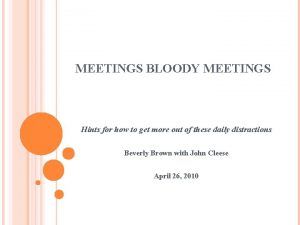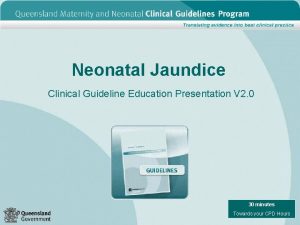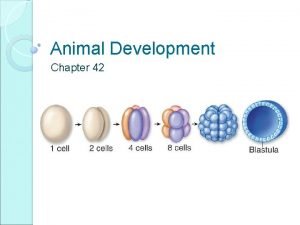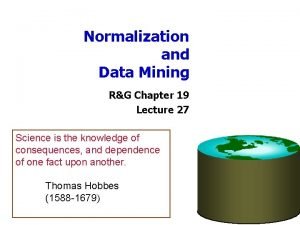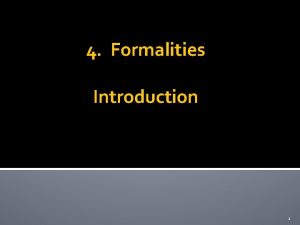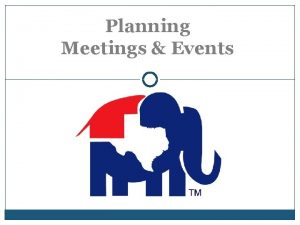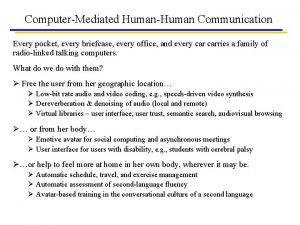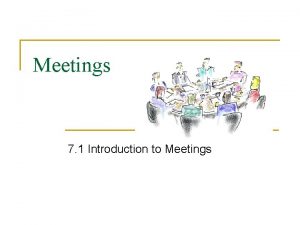Introduction Formalities q Meetings Every 2 weeks for
























![2. 2 Explanations & Mechanisms I Cognitive mechanism: Subjective [plausible] folk theories. q Acquisition 2. 2 Explanations & Mechanisms I Cognitive mechanism: Subjective [plausible] folk theories. q Acquisition](https://slidetodoc.com/presentation_image_h2/325c5ac140d64ff4f5f635a874152503/image-25.jpg)
![2. 2 Explanations & Mechanisms II Cognitive mechanism: Subjective [plausible] folk theories. q Role 2. 2 Explanations & Mechanisms II Cognitive mechanism: Subjective [plausible] folk theories. q Role](https://slidetodoc.com/presentation_image_h2/325c5ac140d64ff4f5f635a874152503/image-26.jpg)
![2. 2 Explanations & Mechanisms IV Cognitive mechanism: Subjective [plausible] folk theories. q Neuropsychology 2. 2 Explanations & Mechanisms IV Cognitive mechanism: Subjective [plausible] folk theories. q Neuropsychology](https://slidetodoc.com/presentation_image_h2/325c5ac140d64ff4f5f635a874152503/image-27.jpg)
![2. 3 Explanations & Mechanisms V Cognitive mechanism: Subjective [plausible] folk theories. q Similarity 2. 3 Explanations & Mechanisms V Cognitive mechanism: Subjective [plausible] folk theories. q Similarity](https://slidetodoc.com/presentation_image_h2/325c5ac140d64ff4f5f635a874152503/image-28.jpg)






- Slides: 34

Introduction / Formalities q Meetings: Every 2 weeks for 2 hours q Exercises / Homework: Ø May be done individually or in groups of two. q Objective of the course: Ø Presentation of phenomena. Ø Explication of mechanisms. Ø Methodological principles. Ø Improvement of critical thinking skills.

Introduction / Formalities q Questions, discussion, etc. are welcome. Please do not hesitate to pose questions or provide comments. q Download the manuscript and provide your own notes. q It might be helpful to read relevant passages in advance.

Introduction: Effect of Training Higher education improves statistical and me thodological reasoning (Nisbett et al. , 1987)

Introduction / Examples Example 1: A university professor, teaching an undergraduate course involv ing probability and statistics gives the students the following task (before he leaves the room!): Half of the class is asked to flip a coin 100 times and record the resulting sequence of head and tails on the blackboard; the other half of the class is tasked with » cooking up « a sequence of 100 heads and tails (without flipping a coin) and also recording the results on the blackboard. Upon his return, to everyone’s surprise, the professor immediately (and correctly) identifies which sequence was derived from flip ping the coin and which was made up. How is this possible? (Chernoff & Russell, 2014; p. 343)

Introduction / Examples Example 2: A famous German TV moderator told the following story: A new machine learning procedure (Neural Network) was able to predict that a person will acquire Parkinson disease in later years only by getting information about his body movements when the person was young. Which information does one need to assess this statement properly?

Introduction / Examples Example 3: A study including many possible predictors revealed that increased consumption of red meat resulted in higher rates of colon cancer. A proponent of the meat producing industry argued that the study exhibits a correlation between the cancer and red meat consumption only. Consequently, it is not possible to make conclusions about cause effect relationships. Why is this line of reasoning unfair?

Introduction / Examples Example 4: In the fall of 1973 the University of California, Berkeley was accused of a gender bias among graduate school admissions. The following admission rates were found: Gender Applicants Accepted Women 4321 35% Men 8442 44% However, the University could demonstrate that the accu sation was unfounded since for 4 out of 6 faculties the ad mission rate was higher for women than for men. How could the result in the table have arisen?

Introduction / Examples Example 5: Stan Wawrinka is an excellent tennis player who won a number of Grand Slam tournaments. However, after having won a Grand Slam competition his performance on the next tournament was usually much inferior and more than once he dropped out of the competition after the first round. How would you explain this decline of performances?

Introduction / Examples Example 6: The picture on left shows the hits (red points) of the German artillery for returning British airplanes during the second world war. It was proposed to fortify the respective regions. However, the known statistician Abraham Wald put forward a different, better proposition. What do you think was Wald’s proposition and why is it better ?

Introduction / Examples Example 7: The physicist has developed a method to identify a financial bubble if a specific value conforms to the » log periodic power law « and follows a specific curve. This can be used to predict that it will burst. From 2009 to 2012 he published encrypted predictions for hundreds of stock values. An unusual approach in science […]. Six month after decryption 85 percent of the forecasts turned out to be true. [Daniel Saraga (2019). Horizonte: Das Schweizer Forschungs magazin, 122, September 2019, p. 38]. Der Physiker hat eine Methode entwickelt, mit der sich eine Finanzblase identifizieren lässt, wenn sich ein Wert gemäss dem » log periodic power law « verhält und einer bestimmten Kurve folgt. Damit lässt sich auch voraussagen, dass sie platzen wird. Zwischen 2009 und 2012 hat er verschlüsselte Prognosen zu Hunderten von Börsentiteln veröffentlicht. Ein in der Wissenschaft aussergewöhnlicher Ansatz, […]. Sechs Monate nach der Entschlüsselung erwiesen sich die Vorhersagen in 85 Prozent der Fälle als richtig. [Daniel Saraga (2019). Horizonte: Das Schweizer Forschungsmagazin, 122, September 2019, p. 38].

Introduction / Overview q Introduction, basics: Human rationality. q Biases in causal judgments. q Errors in memory judgments. q Probability judgments. q Paradoxes and biases of human decision making.

1. Basic considerations I q How can one assess judgmental errors and rational behavior? q Principle 1: Ø Recourse to normative principles. Ø These must be applicable to the current case. q Principle 2: Rational behavior Ø Optimizing expected subjective utility.

1. Basic considerations II q Example: Transitivity of preferences: Incongruent preference ordering of the opponent: Round 1. 2. 3. 4. Me B F H B Opponent F, H B, F F, H Preference B F F H H B q Dutch book and probability axioms

1. Basic considerations III q SEU: Subjective expected utility: q Epistemic vs. instrumental rationality: Ø May result in different outcomes. q Criticisms of research on biases: Ø Normative principles. Ø Applicability of principles. Ø Ecological representativeness.

1. Basic considerations IV q Example. : Singular events and the application of probability theory Ø Rejection of games with positive expected utility: Ø Repetition changes the situation completely. q Hot and cold cognition: Biases due to moti vational factors vs. due to basic cognitive limitations

1. Basic considerations V q Hot cognition: Biases due to motivational factors (e. g. avoiding cognitive dissonance) and other non cognitive factors like stress: Ø Self serving biases. Ø Historical lies. Ø Conspiracy theories. Ø Denial of empirical evidence. Ø Denial of scientific knowledge. Ø Myside bias.

1. Basic considerations VI Hot cognition & cold (Myside bias): Consider the following two scenarios presented to two different groups of Swiss partici pants: Myside (Swiss version): The Swiss army plans to buy 300’ 000 new army knives. The eva luation of various offers from different providers arrives at the conclusion that a Chinese company provides the most favor able offer concerning the balance between price and quality. Following to a great protest within the Swiss public the Swiss army decides to buy the knives of a Swiss provider (Victorinox). How would you evaluate the decision of the Swiss army to buy the knives of the Swiss provider? Otherside (Chinese version): The Chinese army plans to buy 300’ 000 new army knives. The evaluation of various offers from different providers arrives at the conclusion that the Swiss company Victori nox provides the most favorable offer concerning the balance between price and quality. Following to a great protest within the Chinese public the Chinese army decides to buy the knives of a Chinese provider. How would you evaluate the decision of the Chinese army to buy the knives of the Chinese provider?

1. Basic considerations VII q Cold cognition: Biases and errors due to the way we are thinking and reasoning. q Biases due to our cognitive (or functional) architecture that has been shaped by the evolution. q Main topic of the present lecture.

2. Contingency and Causality I q Identification of non existing associations in everyday life: Ø Astrology. Ø Pseudoscientific procedures: Graphology, lie detectors, projective tests. q Spurious causal effects: Ø Negative effects of full moon on human’s behavior. Ø Forgetting traumatic events (repression). Ø Effect of treatments: homeopathy or acu puncture. Ø Positive effects of treatments turned out as negative: arteriotomy (cf. Ernst & Singh, 2009).

2. Contingency and Causality II q Failure to detect existing associations: Ø Importance of hygiene for physical health and lack thereof as a cause of death: Florence Nightingale (1820 1910) Ignaz Semmelweis (1818 1865) q Chapman & Chapman (1969): Illusory correlations Ø Experienced psychiatrists judge irrelevant signs as diagnostic and fail to identify relevant signs. Ø The same for naïve participants.

2. 1 A classical experiment I q Chapman & Chapman (1969): The experiment comprised 4 stages: Stage 1: Ø 32 practicing psychiatrists who have analyzed Ror schach protocols of a number of homosexual men received a list of in dicators (i. e. , answers of hypothe tical clients). Protocols con tained valid but implausible as well as invalid but plausible indicators of homosexuality. Ø The five most frequent answers that were classified as the most re levant by the clinicians concerned invalid but plausible indicators. Only two clinicians mentioned the empirical valid indicators.

2. 1 A classical experiment II q Chapman & Chapman (1969) Experiment: Stage 2: Ø Naïve participants rated the degree of association between homose xuality and the variousindicators. Ø The relationship be tween invalid indicators with high face value (plausibility) was rated as » relatively strong « whereas the association between the valid but implausible indicators and homosexuality was judged as being » quite weak «.

2. 1 A classical experiment III q Chapman & Chapman (1969) Experiment: Stage 3: Ø Ø Naïve participants were trained to learn which Rorschach answers are valid indicators of homosexuality and which are not. Indicators were either of the homosexual type (e. g. , » He feels attracted by other men «) or neutral with respect to homosexuality (e. g. » He of ten feels lonely «). There was no association between the answers (of any type) and homosexual symp toms. Despite the fact that there was no objective relationship between plau sible answers and homosexualsigns an as sociation was» perceived «, similarly to the » experienced « clinicians.

2. 1 A classical experiment IV q Chapman & Chapman (1969) Experiment: Stage 4: Ø The strength of the association between valid answers and homosexual symptoms was varied: The relationship was 50%, 67%, 83%, or 100%. Ø The real strength of the association had no influence on participants’ judgments: They were unable to detect the relationship between valid answers and homosexual symptoms. Ø Only after removing plausible answers from the set participants were able to detect the correct (valid) relationships.
![2 2 Explanations Mechanisms I Cognitive mechanism Subjective plausible folk theories q Acquisition 2. 2 Explanations & Mechanisms I Cognitive mechanism: Subjective [plausible] folk theories. q Acquisition](https://slidetodoc.com/presentation_image_h2/325c5ac140d64ff4f5f635a874152503/image-25.jpg)
2. 2 Explanations & Mechanisms I Cognitive mechanism: Subjective [plausible] folk theories. q Acquisition of subjective theories. Ø Cultural learning / tradition / common sense Ø Role of similarity. Ø Further causes of the aquisition of faulty theories will follow. q Vagueness of subjective theories. Ø Barnum (Forer) effect.
![2 2 Explanations Mechanisms II Cognitive mechanism Subjective plausible folk theories q Role 2. 2 Explanations & Mechanisms II Cognitive mechanism: Subjective [plausible] folk theories. q Role](https://slidetodoc.com/presentation_image_h2/325c5ac140d64ff4f5f635a874152503/image-26.jpg)
2. 2 Explanations & Mechanisms II Cognitive mechanism: Subjective [plausible] folk theories. q Role of so called » experts «: Linus Pauling and the effect of vitamin C on cancer. q Psychology as a source of erroneous psychological theories (psychomyth): Ø Traumatic experiences are repressed. Ø People tend to incestuous behavior. Ø Acting out one’s aggression exhibits a cathartic effect. Ø Mozart effect.
![2 2 Explanations Mechanisms IV Cognitive mechanism Subjective plausible folk theories q Neuropsychology 2. 2 Explanations & Mechanisms IV Cognitive mechanism: Subjective [plausible] folk theories. q Neuropsychology](https://slidetodoc.com/presentation_image_h2/325c5ac140d64ff4f5f635a874152503/image-27.jpg)
2. 2 Explanations & Mechanisms IV Cognitive mechanism: Subjective [plausible] folk theories. q Neuropsychology as a source of erroneous theories (neuromyth): Ø We use only 10% of our brain. Ø Some of us are » left brained « and some are » right brained « and this explains differences in how we learn.
![2 3 Explanations Mechanisms V Cognitive mechanism Subjective plausible folk theories q Similarity 2. 3 Explanations & Mechanisms V Cognitive mechanism: Subjective [plausible] folk theories. q Similarity](https://slidetodoc.com/presentation_image_h2/325c5ac140d64ff4f5f635a874152503/image-28.jpg)
2. 3 Explanations & Mechanisms V Cognitive mechanism: Subjective [plausible] folk theories. q Similarity and the acquisition of erroneous subjective theories: Ø Homeopathy: Use the same drug that caused the disease. Ø In case of problems of virility use the pulverized horn of rhinoceros (it is well known that the horn of the rhino is tough). Ø Negative effects of foods: Fatty potato chips result in oily skin.

2. 3 Explanations & Mechanisms VI q Maintenance of subjective theories. Ø Vagueness of subjective theories: Barnum effect. Ø Arbitrariness of everyday explanations. q Pattern recognition capabilities. Ø Patterns in random sequences

2. 3 Explanations & Mechanisms VII q Barnum effect: Text You have a great need for other people to like and admire you. You have a tendency to be critical of yourself. You have a great deal of unused capacity which you have not turned to your advantage. While you have some personality weaknesses, you are generally able to compensate for them. Disciplined and self controlled outside, you tend to be worrisome and insecure inside. At times you have serious doubts as to whether you have made the right decision or done the right thing. You prefer a certain amount of change and variety and become dissatisfied when hemmed in by restrictions and limitations. You pride yourself as an independent thinker and do not accept others' statements without satisfactory proof. You have found it unwise to be too frank in revealing yourself to others. At times you are extroverted, affable, sociable, while at other times you are introverted, wary, reserved. Some of your aspirations tend to be pretty unrealistic. Security is one of your major goals in life.

2. 2 Explanations & Mechanisms VIII q Barnum (Forer) effect: Strategies: Ø Truisms. Ø Flattery. Ø Statements that are partly true. Ø Statements with restricting remarks. Ø The feeling to be seen through. q Problem of vague theories in psychology & neuropsychology: E. g. Localization of cognitive functions in the brain.

2. 2 Explanations & Mechanisms IX q Arbitrariness of everyday explanations: Example 3 2: Ross et al. (1977) Participants were asked to place themselves in the position of a clinical psychologist attempting to understand predict patient’s performance on the basis of specific background information. The background information consisted of the authentic clinical case histories. Participants were asked to try to explain critical life event of the patient (e. g. a suicide, joining a Peace Corp, a hit and run accident, a candidacy for a political office) on the basis of the presented information.

2. 2 Explanations & Mechanisms X q Arbitrariness of everyday explanations: Example 3 2: Ross et al. (1977) Participants had absolutely no problems to explain the criti cal events. However, as noted by Nisbett and Ross (1980), the explanations exhibited a horrendous amount of arbitrari ness. » An analysis of the actual explanations written by subjects was instructive. The facility with which subjects could pass from almost any real event in the past history of the client to almost any hypothetical event was positively alarming. For example, one patient’s youthful decision to join the Navy was cited as very significant both by subjects asked to explain a subsequent candidature for political office and by subjects asked to explain a subsequent suicide! «

2. 2 Explanations & Mechanisms XI q Arbitrariness of everyday explanations: Example 3 2: Ross et al. (1977) » In the former case, however, service in the Navy was seen as symptomatic of the “gregariousness” and the “desire to serve” that might characterize a potential politician, while in the latter case it was seen as a symptom of the patient’s predisposition to “punish others by running away, ” thus foreshadowing a suicide. « » Any resemblance between the behavior of subjects in this experiment and that of any clinician living or dead, is purely coincidental. « (Nisbett & Ross, 1980, p. 185)
 Meetings, bloody meetings
Meetings, bloody meetings Meetings, bloody meetings
Meetings, bloody meetings Meetings bloody meetings 5 points
Meetings bloody meetings 5 points Abrupt blunt with no formalities
Abrupt blunt with no formalities Abrupt blunt with no formalities
Abrupt blunt with no formalities Efsweb
Efsweb Market access database trade barriers
Market access database trade barriers Every country and every nation
Every country and every nation Mission of microsoft
Mission of microsoft Every knee shall bow every tongue confess
Every knee shall bow every tongue confess Every rotarian every year
Every rotarian every year Every nation and every country
Every nation and every country Every picture has a story and every story has a moment
Every picture has a story and every story has a moment Every child every day
Every child every day Names that rhyme with julie
Names that rhyme with julie Total annual cost of inventory formula
Total annual cost of inventory formula Weeks of supply formula
Weeks of supply formula Antenatal investigations
Antenatal investigations Cough for 3 weeks
Cough for 3 weeks Faríngea
Faríngea 4 weeks before christmas
4 weeks before christmas 8 weeks pregnant ultrasound
8 weeks pregnant ultrasound Neonatal jaundice curve
Neonatal jaundice curve Gestational age in weeks
Gestational age in weeks This weeks lesson
This weeks lesson According to walter pauk, 10 weeks after lecture
According to walter pauk, 10 weeks after lecture Rolling rota
Rolling rota Each space
Each space Flocabul;ary
Flocabul;ary Mamidi tandra takes weeks of hard work
Mamidi tandra takes weeks of hard work Where is the embryo located
Where is the embryo located Covering letter for resignation
Covering letter for resignation Fetus at 15 weeks pictures
Fetus at 15 weeks pictures 3 weeks from today
3 weeks from today Shannon weeks
Shannon weeks
